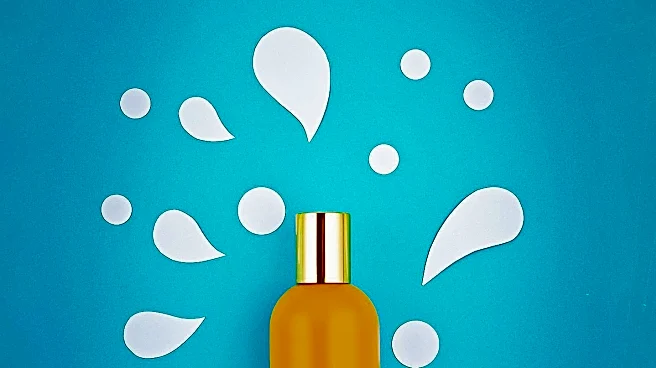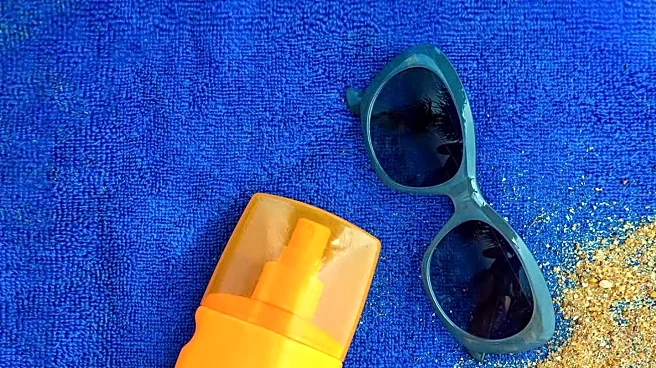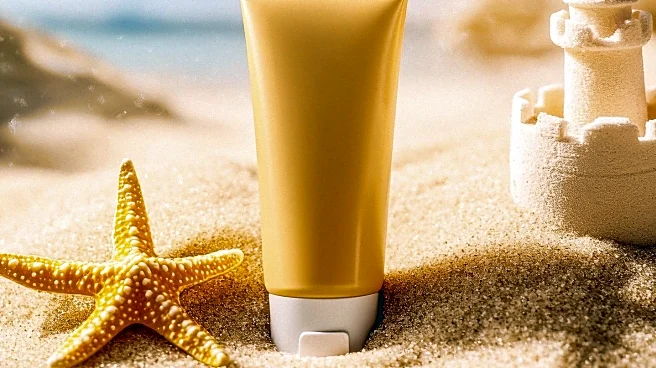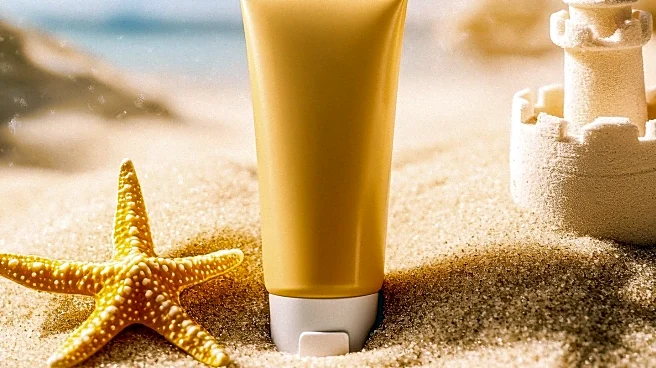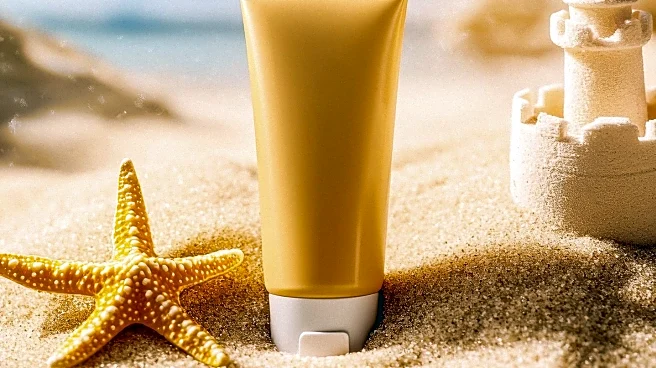What is the story about?
What's Happening?
Recent tests have revealed that some sunscreens labeled as 'SPF 50+' may provide significantly less protection, with some products offering as low as SPF 4. This discrepancy has led to concerns about the reliability of SPF ratings, which are intended to inform consumers about the level of sun protection they can expect. The issue stems from the variability in testing methods and skin reactions, which can result in inconsistent SPF results. The Therapeutic Goods Administration (TGA) has identified a 'base formula' used by several sunscreens that may be responsible for these inaccuracies. This base formula, which includes solvents, emulsifiers, and UV filters, is crucial for the sunscreen's effectiveness. If the base formula is weak or faulty, it can lead to underperformance of the sunscreen, increasing the risk of sunburn and skin cancer.
Why It's Important?
The revelation about inaccurate SPF claims is significant as it affects consumer trust and safety. Sunscreens are a critical component of skin cancer prevention strategies, and unreliable products could lead to increased health risks. The issue highlights the need for stringent testing and regulatory oversight to ensure that sunscreens meet their advertised protection levels. Consumers rely on SPF ratings to make informed decisions about sun protection, and discrepancies can undermine public confidence in these products. The situation also underscores the importance of transparency and accountability in the sunscreen industry, as well as the potential need for improved formulation standards and testing protocols.
What's Next?
The TGA is expected to continue its investigation into the affected sunscreens and may expand its recall list as more products are tested. Consumers are advised to check the TGA's website for updates on affected brands and to seek refunds or replacements for products that do not meet their advertised SPF levels. The ongoing scrutiny may prompt manufacturers to reformulate their products and improve their testing methods to ensure compliance with regulatory standards. Additionally, the situation may lead to increased consumer awareness about the importance of using multiple sun protection strategies, such as wearing protective clothing and seeking shade, in addition to using sunscreen.
Beyond the Headlines
The sunscreen controversy raises broader questions about the efficacy of consumer protection regulations and the role of industry self-regulation. It also highlights the challenges of ensuring product safety in a global market where manufacturing processes and quality control can vary widely. The incident may prompt a reevaluation of how sunscreens are tested and labeled, potentially leading to more rigorous standards and greater transparency in the industry. Furthermore, it underscores the need for public education on sun safety and the limitations of relying solely on sunscreen for protection against UV radiation.
AI Generated Content
Do you find this article useful?
